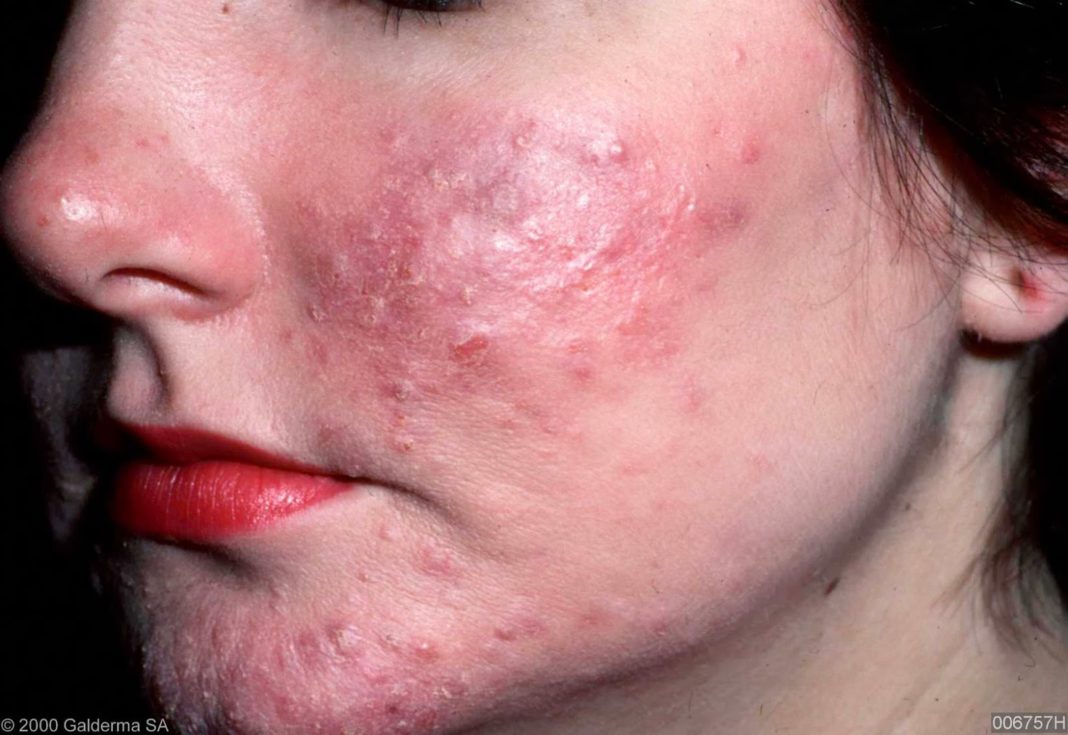Acne scars
Not every single person has the same type of skin. People who have oily skin are having increased chances to get acne compared with people who have drier skin. When our skin is becoming too greasy which is a result from the oil of the sebaceous glands, then on our skin are formed small openings and these openings are beginning to swell in very short time. [1] Acnes are leaving spots and they are known as acne scars. This is a very bad and frustrating problem for your skin. This is a problem which is bothering many people. There are many effective and safe treatments that can help you to rid of the scars. There are many treatments which can reduce the scars. As we are becoming old, our skin loses collagen which means that the acne scars are more noticeable. You should choose the right treatment for the acne scars. Your doctor will tell you what is the best natural treatment or medication for your problem.
Signs and symptoms of Acne scars
When we talk about acne, then many people think that this is a condition which is equal or similar to pimples but in fact is not just pimples. There are many signs which can tell you if you get acne or not such as
- Pustules
- Cysts
- Papules
- Nodules
- Whiteheads and blackheads
These are the most common signs of acne scarring. But you should know that the signs are not the same with symptoms. When you are about to have acne you can experience many symptoms and here are some of them:
- Raised lesions: These are the most common symptoms of acne scars which are also known as pustules. These lesions are having pus in them and it is not easy to be noticed. [2]
- Dark spots: When your acne has healed, then the dark spots are taking its place. If you have this acne scarring, then it can take from few weeks or months to rid of this condition.
Causes of acne scars: There are many different theories about the acne scars which are given by different doctors. There are different types of scars which can take place on your skin due to different reasons. Some people have scars which are due to their skin condition while other people can get scars which are depending from other causes. Your dermatologist will tell you what type of acne scars you have. Here are the most common causes for the acne scars:
- Bacteria
- Oil production [1]
- Dead skin cells [3]
- Clogged pores [3]
The hair follicles in your skin are attached to the oil glands which secrete sebum. The sebum lubricates your skin. When your oil glands secrete a large amount of sebum, the acne scars are taking their place. Also there is accumulation of dead cells which is a reason why the acne scarring is appearing. These causes are mixing together and in the inside of your hair follicles they build up. This is also a great place for the bacteria to grow and in very short time you will notice yellow and red lesions on the areas where you have acne. There are many types of acne and in the most cases the most common reason for these types of acne is dead skin cells and accumulation of oil.
Types of acne scars: If you suffer from acne scars, then you should know that there are different types of scars. Here are the types of acne scars:
- Rolling scars: This type of scars is causing pits or depression in your skin. They usually form on your face.
- Hypertrophic scars: This type of scars is also known as raised acne scars. They are most common on your chest and back.
- Boxcar scars: This type of scars is also taking a place in the depressed acne scars.
- Ice pick scars: This is also a type of depressed scars as we have mentioned the previous types of these scars.
- Keloid scars

Risk factors: There are some people who have more chances to get acne scars compared with other people. Here are the factors which lead to increased risk of getting acne scars:
- Has a blood relative who developed acne scars [4]
- Picks, squeezes or pops acne
- Delays or does not treat inflammatory acne
- Has inflammatory acne (swollen, reddish and painful acne) [5]
These are the risk factors but not every single person who is in this group will develop scars for sure. Also there are cases when people who have these risk factors are not developing acne scars.
Above are some of the few facts on Acne scars.
References:
[1] Endly DC. Oily skin: A review of treatment options. The Journal of Clinical and Aesthetic Dermatology. 2017;10(8):49–55.
[2] Heng AHS, Chew FT. Systematic review of the epidemiology of acne vulgaris. Scientific Reports. 2020. Retrieved from www.nature.com/articles/s41598-020-62715-3
[3] Wake Forest Baptist Medical Center. Acne can’t be prevented or cured, but it can be treated effectively. Science Daily. 2014. Retrieved from sciencedaily.com/releases/2014/06/140603151002
[4] Bagatin E, de Freitas THP, Rivitti-Machado MC, et al. Adult female acne: a guide to clinical practice. Anais Brasileiros de Dermatologia. 2019;94(1).
[5] Connolly D, Vu HL, Mariwalla K, Saedi N. Acne scarring—Pathogenesis, evaluation, and treatment options. Journal of Clinical and Aesthetic Dermatology. 2017;10(9):12–23.




